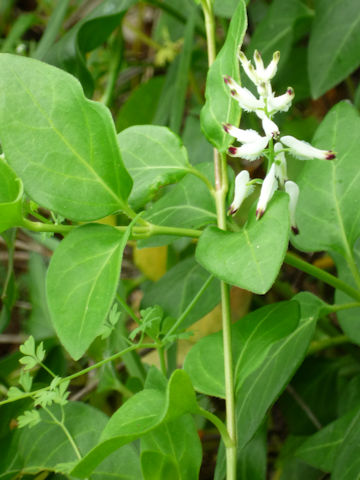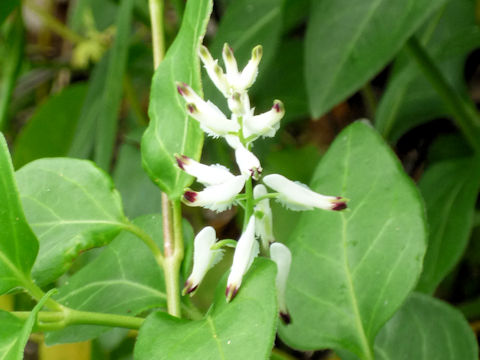|
|
|
|
[Index]
[Back] |
  |
|
|
|
ヨーロッパ北西部から地中海沿岸、それに北アフリカや大西洋のカナリア諸島が原産です。いまでは南北アメリカやオーストラリア、ニュージーランドなどに帰化しています。茎はわずかに分枝して斜上し、葉軸で他の植物などに巻きつき、長さは1~2メートルになります。葉は羽状複葉で互生し、広長円形から卵形の小葉が3~9個つきます。3月から7月ごろ、葉腋から総状花序をだし、白色またはクリーム色の筒状花を咲かせます。花冠の先端は、紫色または黒赤色で、受粉後は次第にピンク色になります。果実はほとんど球形の蒴果です。和名では「にせからくさけまん(偽唐草華鬘)」と呼ばれます。 |
|
|
ケシ科カラクサケマン属の一年草で、学名は Fumaria capreolata。英名は White ramping fumitory、Climbing fumitory。 |
|
|
The White ramping fumitory (Fumaria capreolata) belongs to Papaveraceae (the Poppy family). It is an annual herb that is native to northwestern Europe, the Mediterranean basin, North Africa, and the Canary Islands in the Atlantic Ocean. It has become naturalized in North and South America, Australia and New Zealand. The stems are slightly branched and oblique, and wrap around other plants in the rachis, reaching 1 to 2 m in length. From March to July, racemes of white or cream-colored tubular flowers bloom from the leaf axils. The tips of the corolla are purple or blackish red and gradually turn pink after pollination. The fruits are mostly spherical capsules. In Japanese, it is called "Nise-karakusa-keman" (false foliage scroll fumitory). |
|
|
クロアチア・ドゥブロニク「ロクルム島」にて、2012年05月03日撮影。(photo by Aya Suehiro) |
|
|
|
Shu Suehiro |